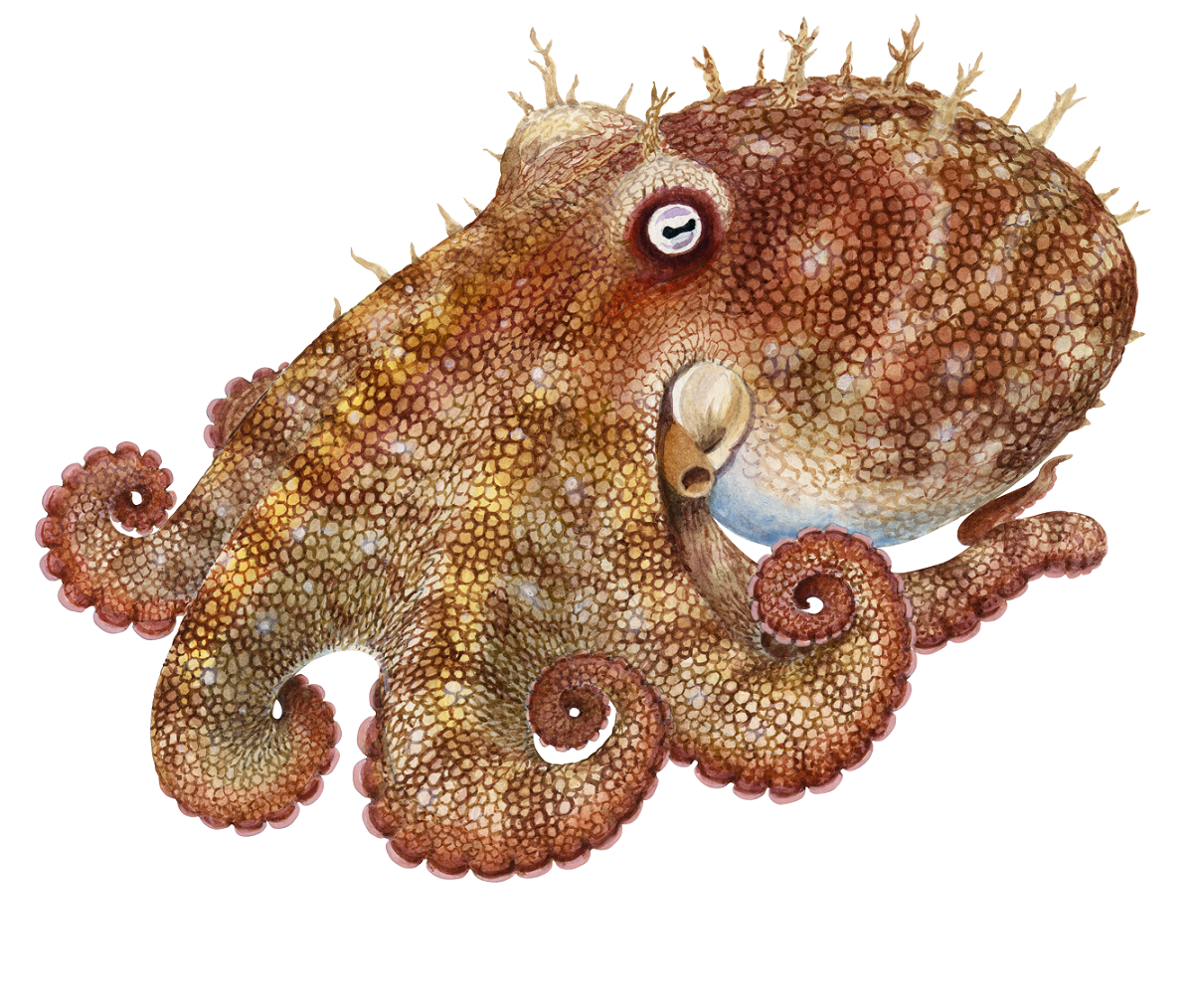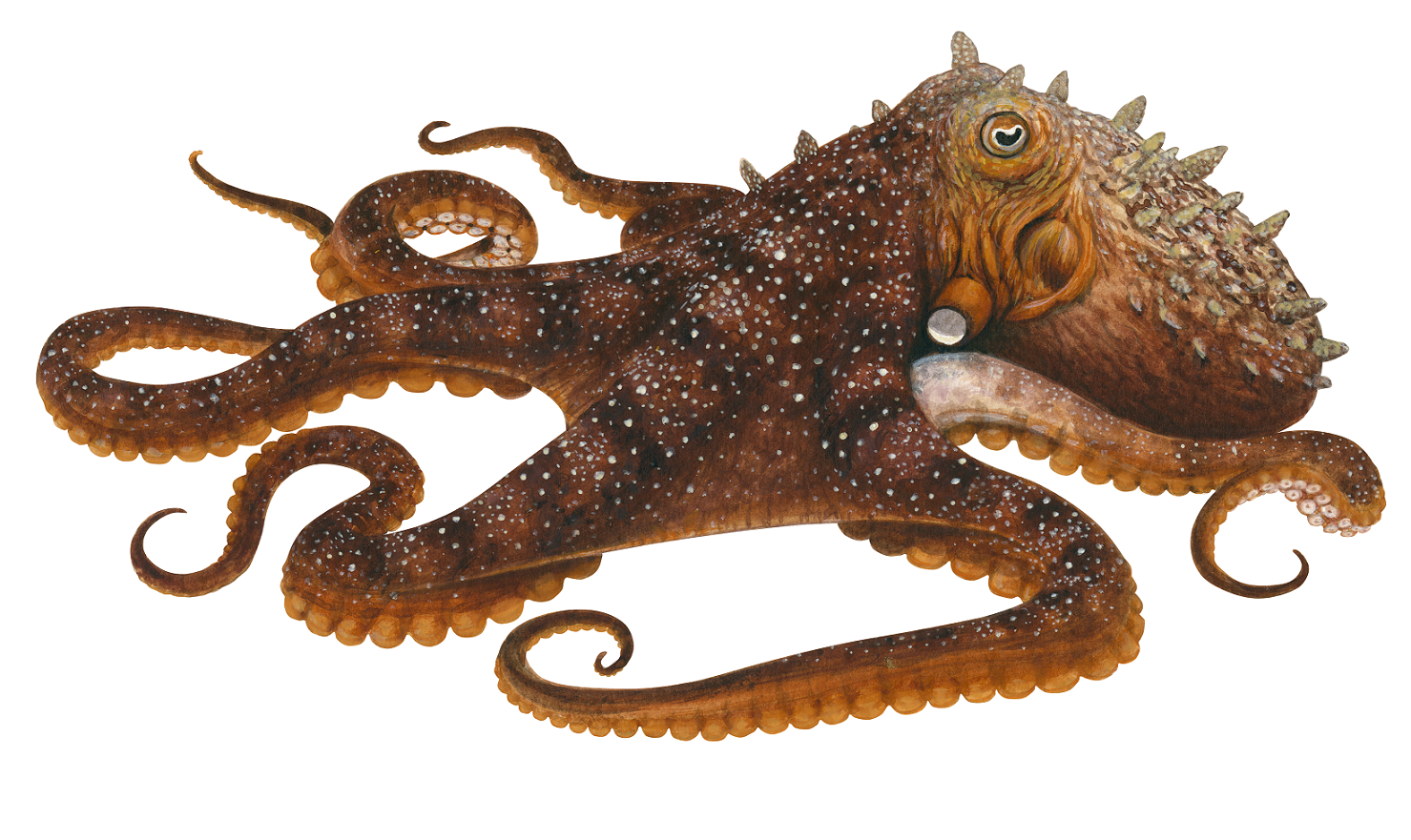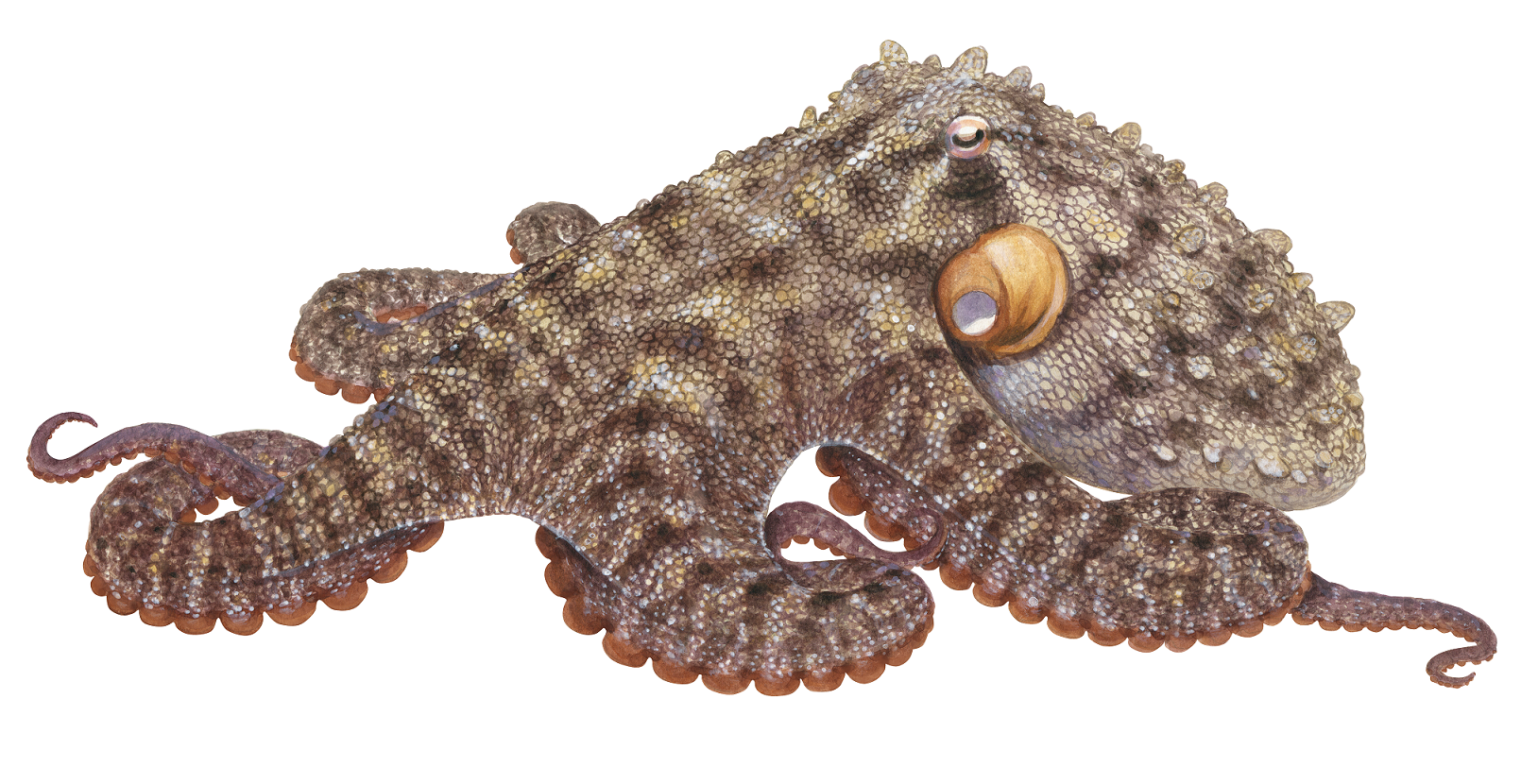Octopus Status
Pale Octopus
Octopus pallidus

2023/24 Pale Octopus Status - Bass Strait Stock (Released 2025)
| Stock Status | DEPLETING | ||
| Stock | Tasmanian Pale Octopus - Bass Strait | ||
| Indicator(s) | Catch, effort and CPUE trends; risk assessment of recruitment impairment | ||
In 2021/22, the total catch of Pale Octopus in the Tasmanian Octopus Fishery (TOF) remained high (109 t). This represents a decline from the record high of 154 t in 2020/21 and the first instance in which catches were above 100 t for four consecutive years. Effort across the fishery was recorded at 258,500 pot-lifts in 2021/22, a slight decrease from the previous year but still concentrated in a small area. Estimates of CPUE from logbook data and from the 50-pot sampling programme both showed a decrease from record high levels in 2020/21.
While catch and CPUE across the whole fishery do not indicate stock depletion, regional analyses indicate a shift in effort and catch away from previously productive areas in the eastern Bass Strait. Both effort and catch have been concentrated in the western part of the fishery in recent years. Evidence of potential depletion in eastern Bass Strait suggests that previous levels of fishing pressure may have been unsustainable in this area. In contrast, another traditional fishing ground offshore from Stanley appears to remain productive.
The ecology of Pale Octopus and the species’ interaction with shelter pot gear means that the TOF is a high-risk fishery. Pale Octopus produce small numbers of large benthic larvae from active brooding, and females seek out pots as refuges in which to brood their eggs. Non-brooding adults also actively seek pots as refuges. Catch and CPUE are likely to be “hyper-stable” as a result of this behaviour, which means there is considerable risk that recruitment may be impaired and sudden declines in biomass might occur without a notable prior change in catches or CPUE. Coupled with evidence of potential depletion in the eastern region of the fishery, and the recent concentration of effort in traditional and new fishing grounds in western regions, the pale octopus stock might be at risk of depletion. Hence, Pale Octopus in the Bass Strait stock is classified as Depleting.
2023/24 Pale Octopus Status - Tasmanian Shelf Stock (Released 2025)
| Stock Status | SUSTAINABLE | ||
| Stock | Tasmanian Pale Octopus - Tasmanian Shelf | ||
| Indicator(s) | Catch and effort | ||
Pale Octopus catch from the developmental fishery operating in state waters outside the TOF was 3.0 t in 2021/22. This stock has been minimally accessed by the commercial fishery. Developmental fishing permits have been issued since 2016/17 (excluding 2018/19); however, no catch was recorded prior to 2019/20 and, since then, both catch and effort have remained very low. In 2021/22, an additional 0.3 t of Pale Octopus was reported by the Rock Lobster fishery. Given the low levels of exploitation, the Pale Octopus stock in east, west, and southern Tasmanian waters is classified as Sustainable.
Māori Octopus
Macroctopus maorum

2023/24 Māori Octopus Status (Released 2025)
| Stock Status | SUSTAINABLE | ||
| Stock | Tasmanian Māori Octopus | ||
| Indicator(s) | Catch; risk assessment of recruitment impairment | ||
A total of 20.5 t of Māori Octopus and 0.1 t of ‘Octopus, unidentified’ (presumably mostly Māori Octopus) was landed by Tasmanian commercial fishers in 2021/22. Assuming all ‘Octopus, unidentified’ was indeed Māori Octopus, these catches comprise 18.5 t landed by-product from the Rock Lobster fishery, 2.1 t landed by-product from the TOF and developmental Pale Octopus fisheries, 0.014 t landed by-product from the Scalefish fishery, and 0 t from the targeted Eaglehawk Bay octopus fishery.
Similarly to Gloomy Octopus, Māori Octopus is likely to be more resilient to fishing pressure than Pale Octopus, albeit under moderate risk of recruitment impairment according to its assessment score. Quantities of Māori Octopus killed and discarded by the Rock Lobster fishery are unknown, which challenges a reliable assessment of both catch and potential biomass depletion. When catch data and trip limits for octopus are compared with the total number of Rock Lobster trips per year, it appears that overall catch and, hence, discard mortality of Māori Octopus in this fishery might be low. Video observations suggest that the gear selectivity for Māori Octopus within the Rock Lobster fishery may also be low. Thus, the Tasmanian Māori Octopus stock is classified as Sustainable.
Gloomy Octopus
Octopus tetricus

2023/24 Gloomy Octopus Status (Released 2025)
| Stock Status | SUSTAINABLE | ||
| Stock | Tasmanian Gloomy Octopus | ||
| Indicator(s) | Catch; risk assessment of recruitment impairment | ||
Catch of Gloomy Octopus within the TOF and developmental fishery was only 815 kg in the 2021/22 season and has remained close to zero since an outlier peak of 18.6 t in 2017/18. Gloomy Octopus catch reported from the Rock Lobster fishery was 1.6 t in 2021/22, however the accuracy of species identification in these data is uncertain. Gloomy Octopus catch from other fisheries was negligible. The reproductive biology of Gloomy Octopus suggests that this species may be more resilient to fishing pressure than Pale Octopus, but still under moderate risk of recruitment impairment. Gloomy Octopus catches in Tasmania appear to be driven by the distribution of effort in the TOF. Aside from apparent 2021/22 catches around the state from the Rock Lobster fishery, this species has been caught primarily in the eastern Bass Strait near Flinders Island. However, fishing effort within the TOF has been concentrated almost exclusively in western Bass Strait in recent years and Gloomy Octopus catch has been negligible. It is unknown whether the biomass of Gloomy Octopus in Tasmanian waters is sufficient for a more substantial fishery. However, given the low exploitation of the stock, Gloomy Octopus in Tasmania is classified as Sustainable.
Learn more about what each stock status classification means on our Stock Status Classifications Information Page:



